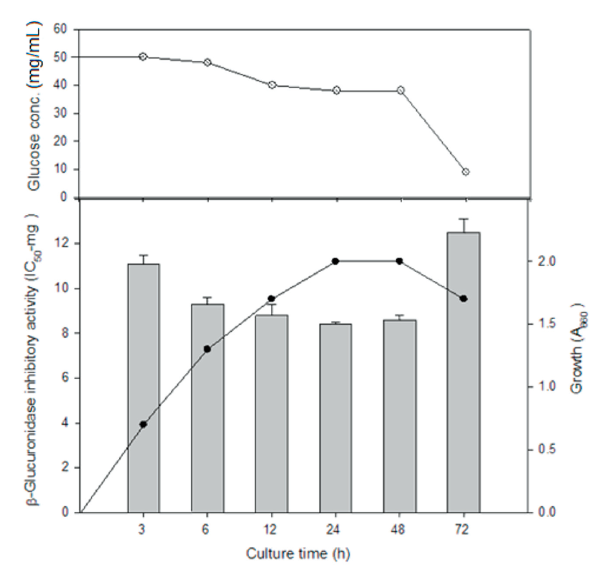Abstract
We aimed to produce a potent β-glucuronidase inhibitor from wild yeast that could inactivate toxic substances in the colon. Culture supernatants and cell-free extracts of non-pathogenic wild yeasts were prepared and their β-glucuronidase inhibitory activities were measured. Cell-free extract from
Figures & Tables

Fig. 1. Effect of culture time on the production of β-glucuronidase inhibitor from Candida oleophila WP5-19-1. : β-glucuronidase inhibitory activity, : growth.


